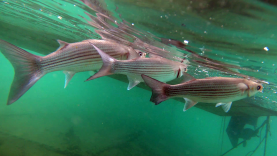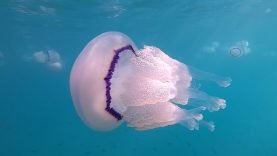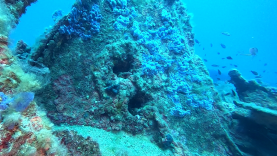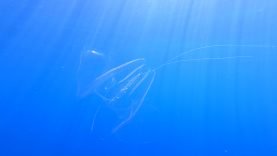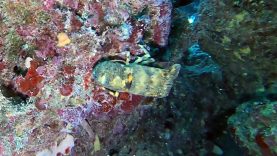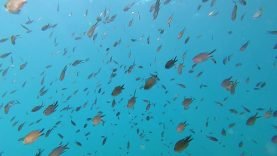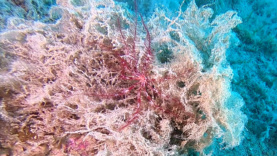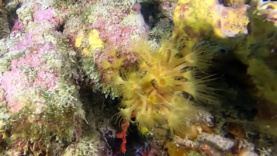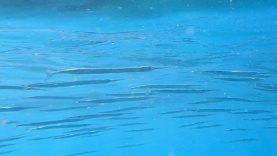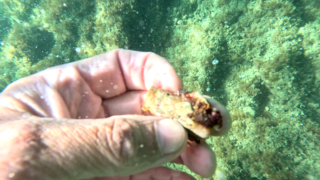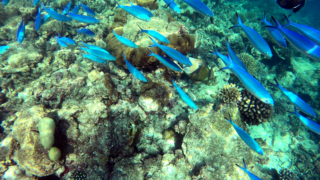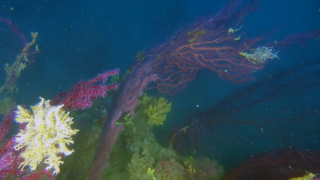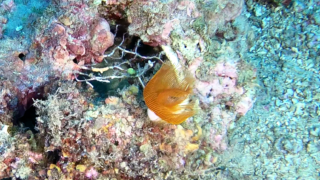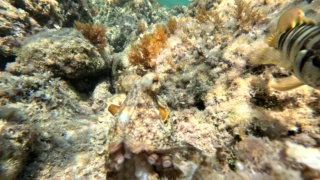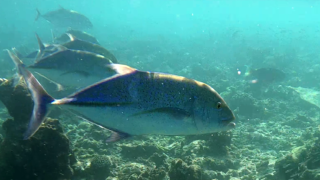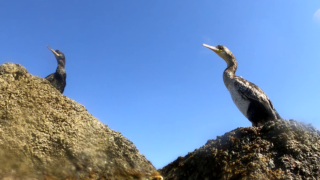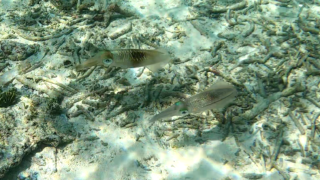Chromis chromis - Mediterranean chromis
In this video
In this collage of various videos you can see the various stages of growth of the Chromis chromis, the very common black damselfish that inhabits the depths of the entire Mediterranean Sea. At first we encountered the fry in their characteristic electric blue livery. Chromis chromis Mediterranean chromis Castagnola nera intotheblue.it
Later we see how blue turns into the classic black that characterizes the only Chromis species present in our seas. As the Mediterranean Chromis, the blue remains on the head and on a small side stripe and then disappears permanently.
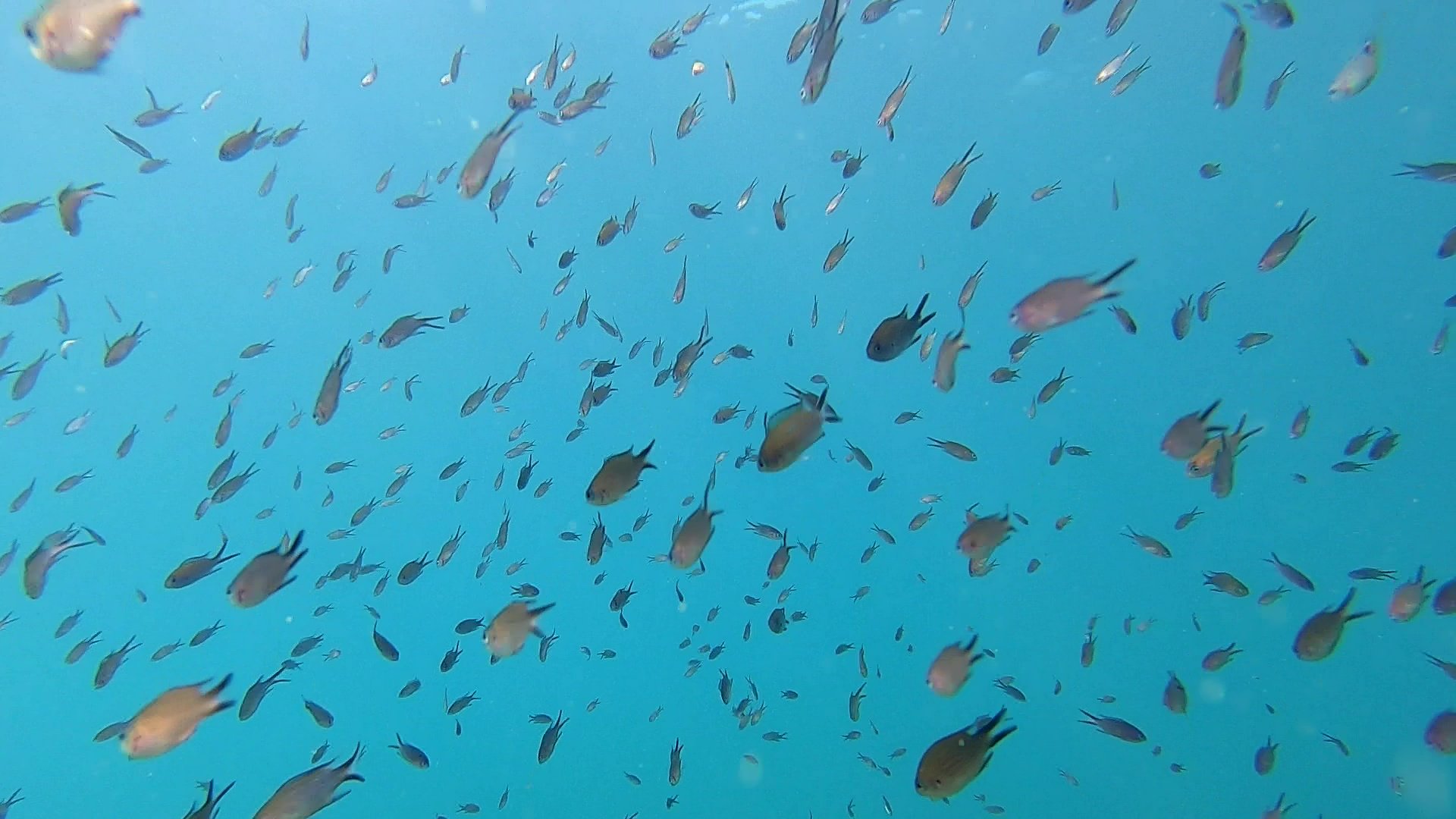
Another thing that can be seen well thanks to these images is the life strategy of this fish, that is to live practically in groups of many specimens since the hatching of the eggs, which are guarded by the male, until the adult life mainly passed in free water from a few meters deep up to about thirty / forty meters.
Furthermore, the fact that it is very common and very sociable helps us to film and photograph it, once we recognize the diver not as a threat these fish allow themselves to be very close even in almost adulthood.
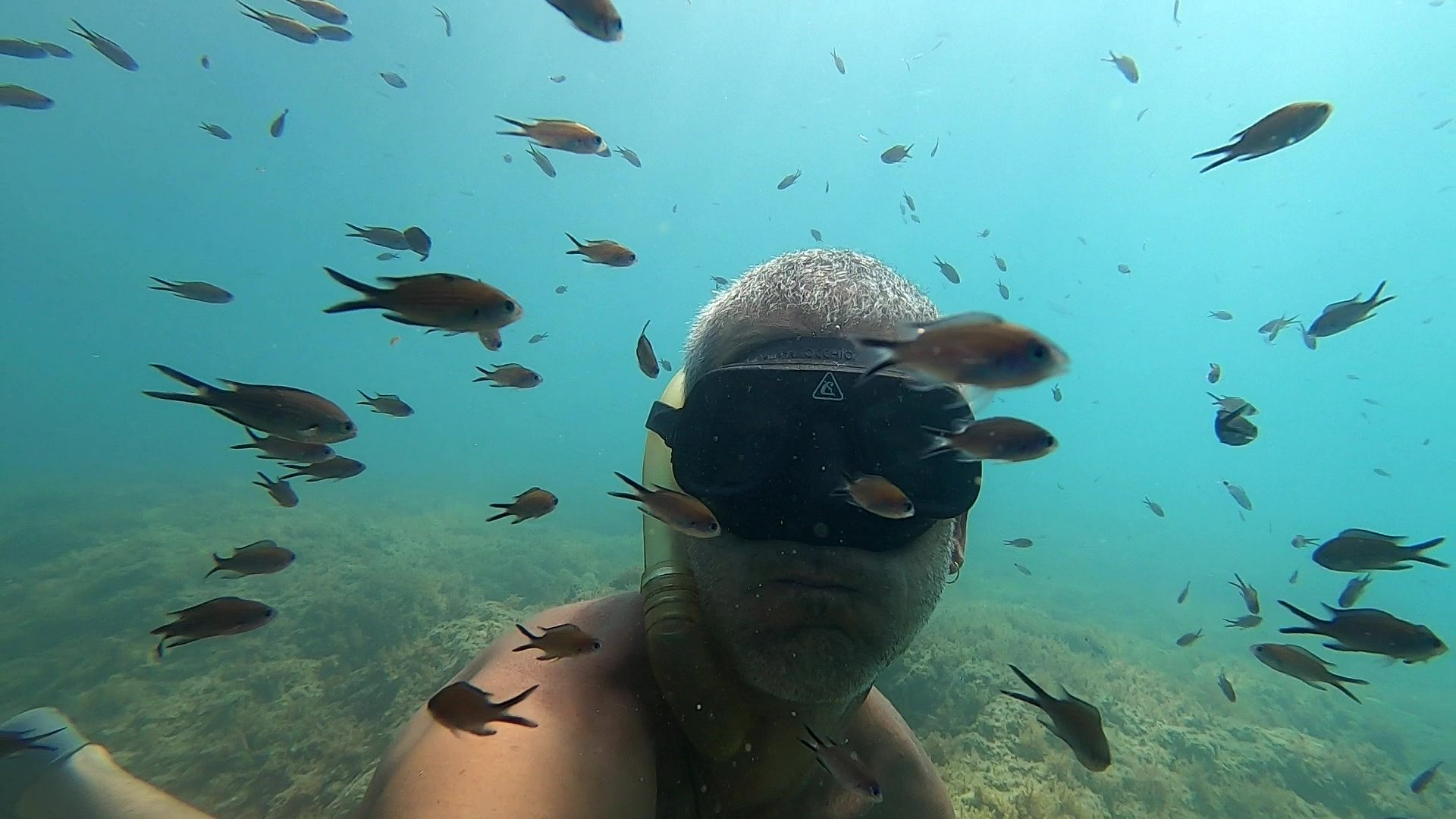
Chromis chromis, commonly known as damselfish, is a saltwater fish belonging to the Pomacentridae family.
Distribution and habitat
Castagnola is widespread in the Mediterranean (where it is very common) and in the eastern Atlantic between Portugal and the Gulf of Guinea (more rarely up to Angola).
It populates the shallow rocky bottoms where it lives in shoals scattered in mid-water. They are also found above the Posidonia oceanica meadows. The small specimens still with the blue livery are photophobic and are often encountered in caves, crevasses and other shady environments.
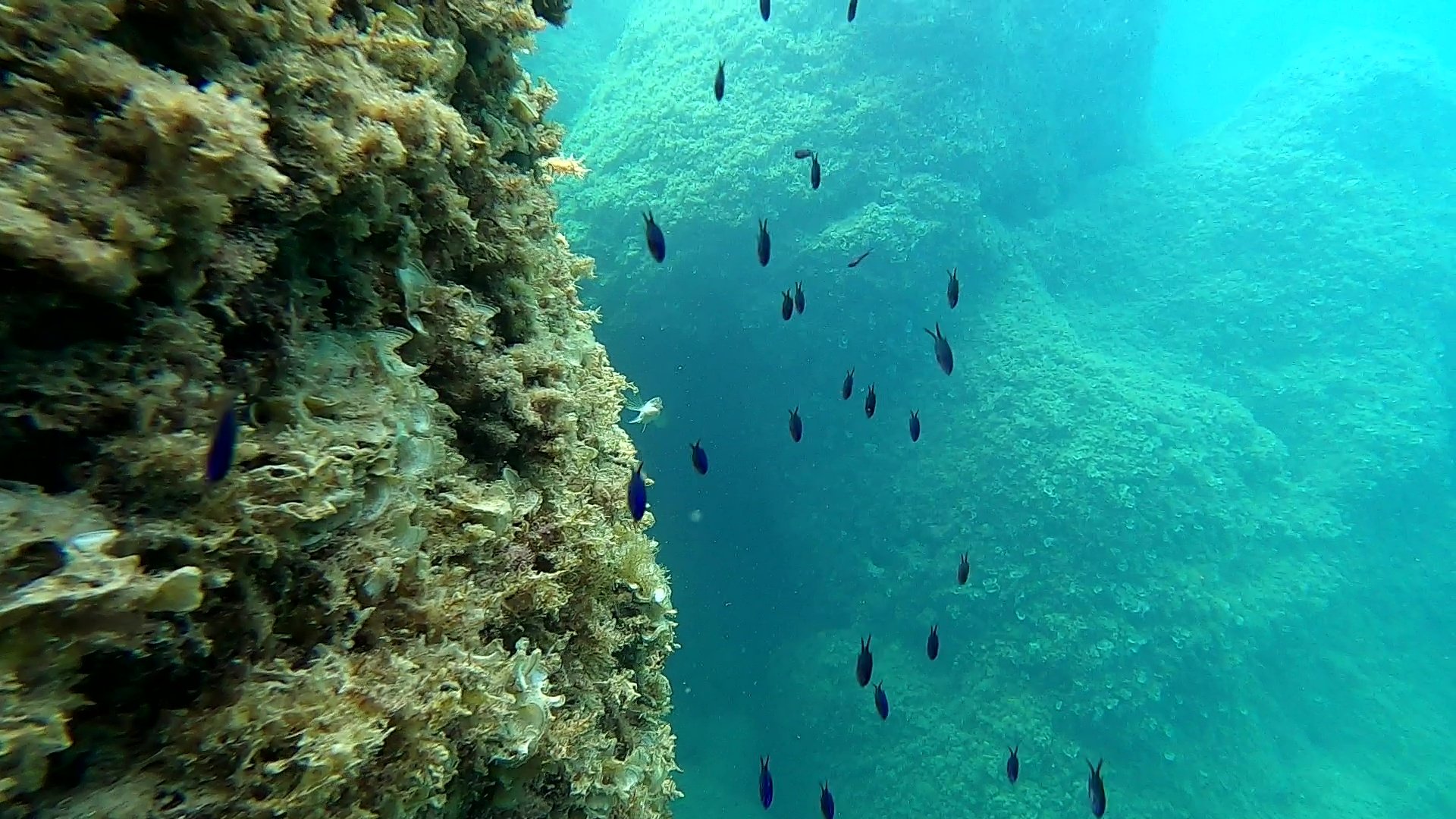
Description
It has an oval, flattened body with a small mouth and large eyes. The dorsal fin is unique, with spiny rays anterior and soft rays longer posteriorly, the anal fin has only two spiny rays followed by many soft ones. The caudal fin is indented in the center and has two pointed lobes. The upper and lower rays of this fin are darker than the rest giving the impression of a more incised tail than it actually is. The ventral and pectoral fins are quite developed. The flakes are large.
The juveniles have an electric blue color, while the adult specimens gradually lose it with growth to become dark brown or blackish with longitudinal rows of lighter spots on the sides. Color may vary: males in scrubs are very dark while adults turn pale at night.
It reaches a maximum length of 16 centimeters but is usually much smaller.
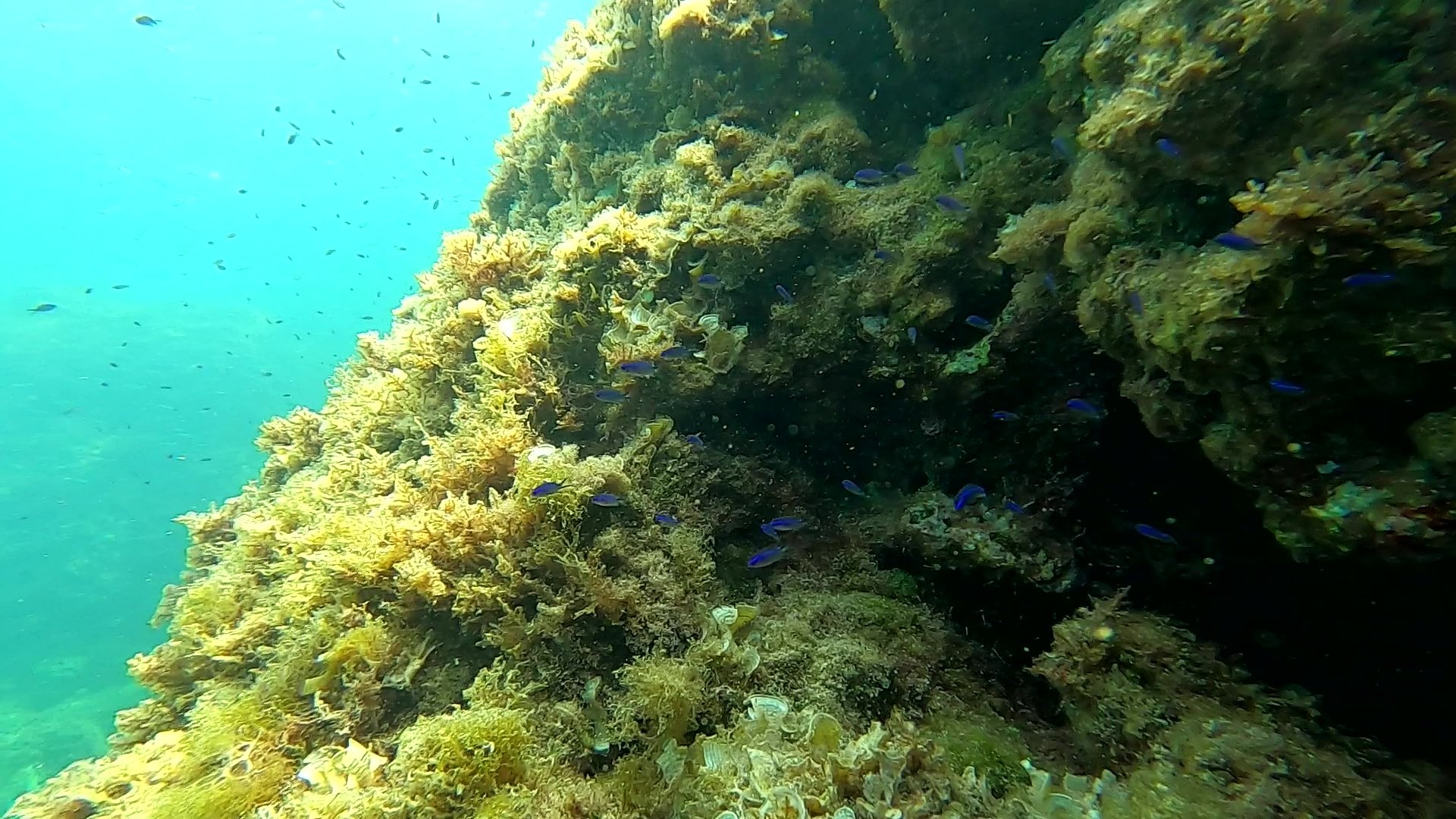
Reproduction and behavior
Reproduction takes place in summer, the male performs a nuptial dance to convince the female to go to the part of the seabed that will act as a nest. There the spawning takes place for about 10 minutes after which the female is immediately chased away. The eggs are not floating but stick to the substrate thanks to the adhesive filaments they are equipped with and are actively defended and oxygenated by the male. During the day they swim in swarms in mid-water, occasionally approaching the bottom to seek nourishment.
https://it.wikipedia.org/wiki/Chromis_chromis
https://en.wikipedia.org/wiki/Chromis_chromis

